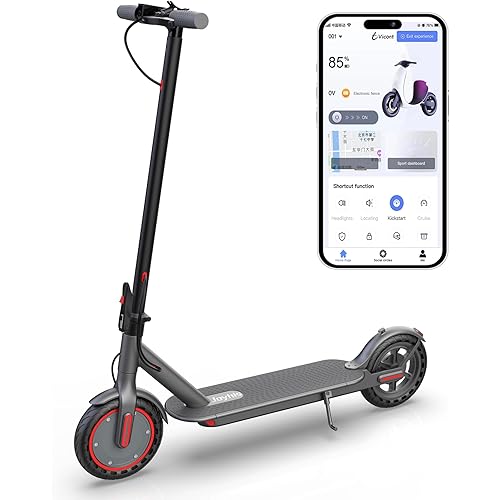









Buy Now, Pay Later
- – Up to 36-month term if approved
- – No impact on credit
- – Instant approval decision
- – Secure and straightforward checkout
Ready to go? Add this product to your cart and select a plan during checkout.
Payment plans are offered through our trusted finance partners Klarna, Affirm, Afterpay, Apple Pay, and PayTomorrow. No-credit-needed leasing options through Acima may also be available at checkout.
Learn more about financing & leasing here.
Selected Option
Returnable until Jan 31, 2026 Learn more
To qualify for a full refund, items must be returned in their original, unused condition. If an item is returned in a used, damaged, or materially different state, you may be granted a partial refund.
To initiate a return, please visit our Returns Center.
View our full returns policy here.
Style: CPC 800 GPS SCT
Set: Telescope
Features
- Item may ship in more than one box and may arrive separately
- 8 inch Schmidt Cassegrain telescope
- 2032 millimeter focal length
- Aluminum optical tube construction
- Starbright XLT high performance optical system ; Convenient remote hand control holder - Allows you to view information hands-free while using the scope
- SkyAlign alignment technology ; 9x50 finderscope to help accurately find objects
Description
A rock-solid dual Fork arm mount and large aperture At an affordable price: that’s what makes the CPC telescope series a favorite among experienced amateur astronomers. Celestron’s revolutionary skyalign plus an internal GPS make alignment a snap. Use the Computerized hand control to quickly slew to over 40, 000 celestial objects, then track your target precisely as it moves across the night sky. Imagers can place the CPC dual Fork arm mount on an optional HD Pro wedge to polar align it for long-exposure astrophotography. Thoughtful ergonomic design makes setting up and breaking down your CPC quick and painless. Celestron CPC 800 XLT Computerized Telescope with Tube and Tripod Celestron's CPC 800 XLT telescope combines excellent Schmidt-Cassegrain optics with a state of the art computerized mount featuring GPS technology and user friendly design. This telescope is a solid all around performer likely to please both the experienced observer and the new astronomer. After using older computerized telescopes, Celestron's new SkyAlign system seems almost like magic. I don't need to remember obscure star names or use a star chart, I just point the telescope at three bright stars or planets and the CPC 800 tells me the star names! SkyAlign is one of several alignment options, and some options can even be used during daylight.The drive base and heavy duty CPC tripod are unusually solid, it's the same base and drive system used on the larger CPC 1100 telescope. When I rap on the telescope fork the vibration is gone in less than a second. In practice this means easier focusing even at high magnification. The solid base and precise tracking is a real advantage while viewing the planets and while photographing them. I've been able to image the planets at focal lengths of f/30 and f/40 which would be quite difficult without perfect tracking. Mars as seen through the Celestron CPC 800 XLT computerized telescope.The excellent optics of the CPC 800 XLT telescope show me excellent views of the planets. When I look at Jupiter with a 12.5mm plossl eyepiece (about 160x magnification) I see multiple cloud bands and I can see the pale color of Jupiter's famous Great Red Spot. One night when the air was unusually still and clear I used a 7.5mm Ultrascopic eyepiece with a 2x Barlow for a magnification of 533X. Jupiter's moons were plainly resolved as tiny disks that night. When I look at Saturn at 200X I can usually see the Cassini division in the rings and make out four or five moons. When Mars comes closest to Earth every two years I've even been able to spot dust storms blowing across the Martian dessert.The CPC 800 XLT also delivers beautiful views of deep space objects. The CPC 800 is large enough that galaxies begin to reveal their structure and globular star clusters are well resolved. At a recent Astronomy viewing night at a local school, some of the students liked globular cluster M13 the best. They said it looked like a snowflake made of tiny stars! The well known Orion Nebula is a winter highlight. Most telescopes will show four stars in the Trapezium, the bright multiple star inside the Orion Nebula, but with the CPC 800 I can often pick out faint stars "E" and "F" as well.The accessories with this CPC 800 XLT package include an 8x50 finder scope, a 40mm plossl eyepiece (50X magnification), the NexStar computer hand control, and a 12 volt car battery adapter. You'll also need a 12 volt power supply. An AC adapter is available, but I like using a 12 volt battery pack because I don't need to be near an extension cord to use the telescope.A few good eyepieces help me take full advantage of the CPC 800's excellent optics. Plossl eyepieces like the ones in Celestron’s Accessory Kit would be an economical way to get started, and of course premium eyepieces like the TeleVue 10mm Radian offer delightful views of the planets. If I were choosing just two eyepieces to add to the CPC 800, I'd pick a 10mm X-Cel eyepiece (200X for planet viewing) and a 21mm X-Cel eyepiece (100X for globular clusters and galaxies) to go with the standard equipment 40mm (50X) eyepiece.The CPC 800 XLT is an excellent all around telescope. The C8 optics are large enough to give me delightful views of deep space objects, and the optics are powerful enough to show me amazing views of the planets. Even with all this power the whole system is portable enough that I can easily transport my telescope to the local high school and share the view on Astronomy night. --Jeff Phillips Pros:excellent optics solid drive base easy computerized finding and tracking Cons:12 volt power supply not included Suggested Options: Celestron Accessory Kit Celestron Power Tank battery Celestron NexImage web-cam P.when('A').execute(function(A) { A.on('a:expander:toggle_description:toggle:collapse', function(data) { window.scroll(0, data.expander.$expander[0].offsetTop-100); }); }); From the Manufacturer The CPC 800 GPS XLT is the most portable of Celestron's top-of- the-line fork-mounted astronomical telescopes and includes Celestron's premium StarBright XLT coatings. This telescope is at home as a superb visual instrument or, with optional wedge and CCD cameras, as a serious astrophotographer's tool. Turn this scope to planets and see amazing detail on the surface of Jupiter; see Cassini's Division in the rings of Saturn, and resolve details on the surface of Mars. Even the distant Uranus, Neptune and Pluto are within your reach. Although large in aperture, with its conveniently located carrying handles and an instrument weight of only 42 lb., this telescope is portable enough to setup in your backyard or take with you to your favorite dark sky location. Celestron's new CPC Series with revolutionary SkyAlign Alignment Technology re-defines everything that amateur astronomers are looking for — quick and simple alignment, GPS, unsurpassed optical quality, ease of set-up and use, ergonomics, enhanced computerization and, most important, affordability. Internal GPS The CPC Series' internal GPS receiver automatically downloads the date and time from orbiting satellites and pinpoints its exact location on Earth. This eliminates the need for you to manually enter the date, time, longitude and latitude. Celestron's Revolutionary SkyAlign Once the CPC's internal GPS has established the telescope's position, aligning the telescope is as easy as 1-2-3! Simply locate and use hand control to manually point (slew) the telescope to three bright celestial objects. You do not need to know the names of the stars — you may even pick the moon or bright planets! Celestron's NexStar software technology will model the night sky to determine the position of every star, planet and celestial object above the horizon. Once aligned, the remote hand control allows direct access to each of the celestial catalogs in its user- friendly database. Celestial Object Database The CPC database contains over 40,000 celestial objects including Messier objects, the Caldwell Catalog, as well as NGC Galaxies, nebulae and planets. User-definable filter limits make navigating through this expansive database quicker and easier. Filter Limits let you filter out objects that are outside of your local horizon (ie, if trees or mountains were in the way). Identify feature tells you what you're looking at, but it can also be a very fun way to tour around the sky. Just point the telescope up somewhere and ask it to identify Messier objects (for instance) and it will show you the 5 nearest Messier objects to your position and let you GOTO them. You can keep doing this for different parts of the sky or for different object types -- it is a lot of fun. There's also "Solar Sys Align" that lets you align on the sun or moon for daytime observing -- it is easy to use this to see planets or bright stars in the day. Innovative Features The new CPC Series telescopes, like our acclaimed Advanced Series and premium CGE Series telescopes feature meticulously matched and hand-figured optical systems that are manufactured in our facilities in Torrance, California. In addition, all CPC models are available with StarBright and StarBright XLT High Performance Optical Coatings. With the introduction of the CPC Series, Celestron has “gone back to the drawing board” and re-designed, re-engineered, and re-invented a telescope family that provides superior quality, unsurpassed ease of use, and incomparable value. All CPC models ship standard with our NexRemote telescope control software. See more
Brand: Celestron
Model Name: CPC 800 GPS (XLT) Computerized Telescope
Optical Tube Length: 432 Millimeters
Eye Piece Lens Description: Plossl
Objective Lens Diameter: 203.2 Millimeters
Telescope Mount Description: Altazimuth Mount
Product Dimensions: 36"D x 36"W x 66"H
Focus Type: Manual Focus
Power Source: DC Power Supply
Finderscope: 9x50 finderscope
Product Dimensions: 36 x 36 x 66 inches
Item Weight: 59.9 pounds
Item model number: 11073-XLT
Batteries: 1 Lithium Metal batteries required. (included)
Is Discontinued By Manufacturer: No
Date First Available: August 28, 2005
Manufacturer: Celestron
Frequently asked questions
To initiate a return, please visit our Returns Center.
View our full returns policy here.
- Klarna Financing
- Affirm Pay in 4
- Affirm Financing
- Afterpay Financing
- PayTomorrow Financing
- Financing through Apple Pay
Learn more about financing & leasing here.
Similar Products
Top Amazon Reviews






















